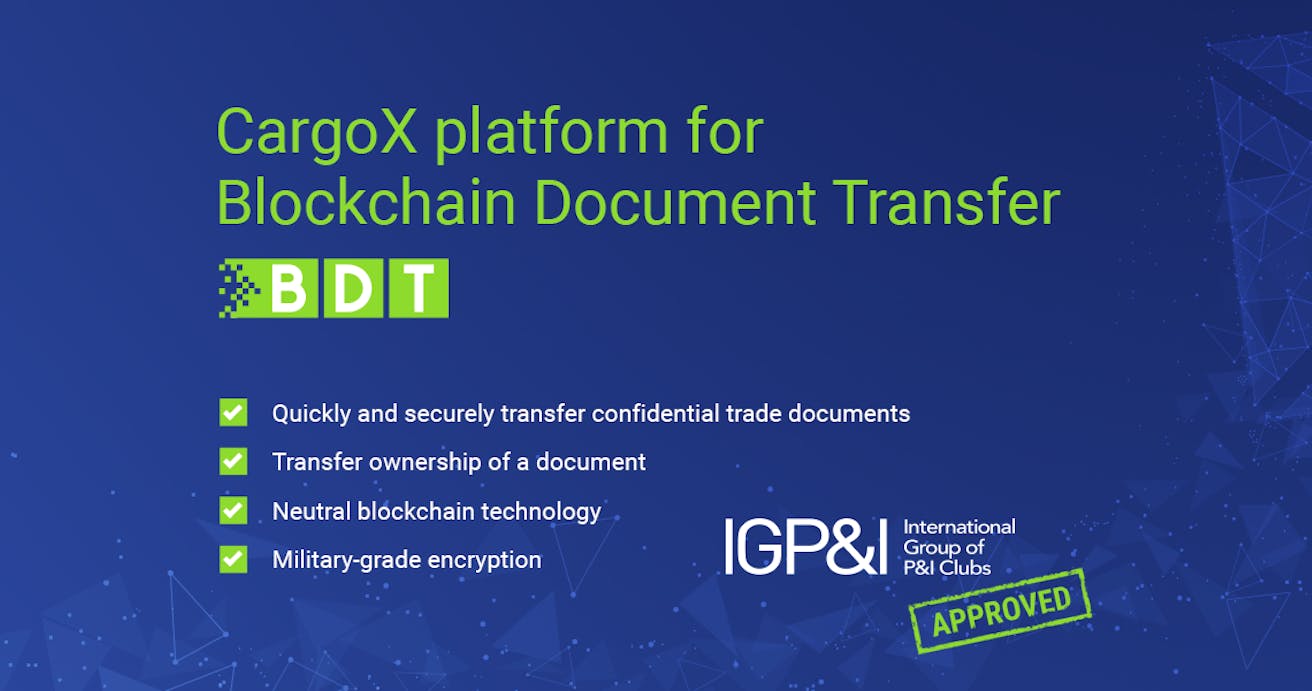
Why blockchain document transfer differs from emailing a PDF
Simon Ručigaj,
digitalization advisor and communication manager
The complete digitalization of original document processes is a big challenge and companies have been in various stages of digital transformation for a while now, with recent events bumping efforts up a notch.
Shipping, trade, financial, and other companies who need to issue, receive, process, store, and archive documents of title and other original documents are looking at several options, various technologies, and different methods of handling the issue.
Most have plenty of experience with sending PDF documents over email, but there are issues with that which cannot be resolved with existing email technology. This is where digital platforms for original document exchange and processing step to the forefront. And, among them, the newest blockchain platforms are at the cutting edge!
The CargoX Platform for Blockchain Document Transfer has numerous advantages over simply emailing PDFs or other types of documents, and even over expensive centralized document management and processing solutions.
Transfer ownership
When you transfer documents electronically, you actually transfer ownership of the document, and blockchain technology lets you state/prove ownership at any time with your unique private cryptographic keys. It is like handing the document over to somebody in person!
Control the original
The underlying blockchain technology creates a document transaction, similar to a banking system - but even more resilient and tamper-proof. So within the platform, there is always one unambiguous document, and that document is electronically signed. Nobody can tamper with its content unlike email, where copies of the document could be flying around modified and multiplying without control.
Trace the steps back
A blockchain document platform enables you to audit and trace all the transactions within a specific workflow back to the originator of the document and the workflow. The proof is cryptographically strong and secure beyond question and it can easily be upheld in the court of law. Nobody can centrally enter a database and forge data, seals, or even document transactions.
No spying upon
All the original document contents are encrypted with military-grade cryptography and protected by private encryption keys. No unauthorized person can peek into the document’s content by disabling or decrypting that content - there are no central servers under the control of a single entity, and the public infrastructure for private keys is completely decentralized.
Permanent visibility
Once a document is created or uploaded, sealed and sent, the transaction is visible on a public blockchain - but the sender, recipient, and content of the transfer are kept cryptographically confidential. Each party in the process can see when transactions are being confirmed and when the document is delivered to the recipient.
With email, there are cases when messages are sent, but not received, and it is sometimes ridiculously difficult to debug the message delivery process.
No size limits
There are no size limits when transferring original documents digitally through a blockchain document transfer platform. So it is no problem if the envelope contains multiple documents of different types. Email, on the other hand, is usually limited, which can cause delivery failures and processing hiccups.